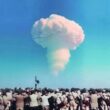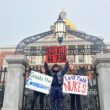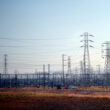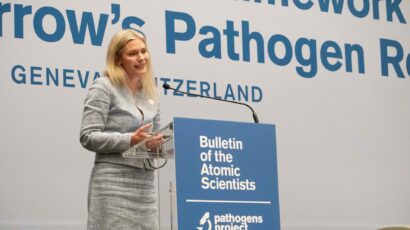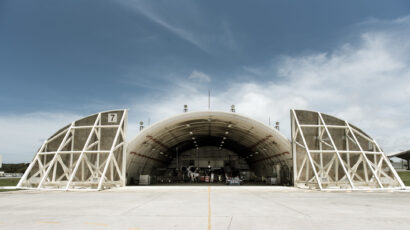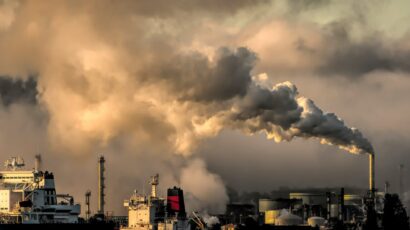Overstepping bounds
By Daniel H. Joyner, October 30, 2012
The most recent International Atomic Energy Agency (IAEA) director general's report on the implementation of nuclear safeguards in Iran includes the following paragraph in the summary:
"While the Agency continues to verify the non-diversion of declared nuclear material at the nuclear facilities and [locations outside facilities (where nuclear material is customarily used)] declared by Iran under its Safeguards Agreement, as Iran is not providing the necessary cooperation, including by not implementing its Additional Protocol, the Agency is unable to provide credible assurance about the absence of undeclared nuclear material and activities in Iran, and therefore to conclude that all nuclear material in Iran is in peaceful activities."
In his report to the IAEA Board of Governors, Director General Yukiya Amano states — as did his predecessor, Mohamed ElBaradei — that the agency can indeed verify that all declared safeguarded nuclear material in Iran has not been diverted to non-peaceful use. This mandate for investigation, as well as the assessment standard for this investigation, comes directly from Article II of Iran's Comprehensive Safeguards Agreement (CSA) with the IAEA, which mandates the agency to verify "that such material is not diverted to nuclear weapons or other nuclear explosive devices." Currently, Iran has only one safeguards agreement in force with the IAEA.
But the director general's report also applies two additional and separate legal standards — "to provide credible assurance about the absence of undeclared nuclear material and activities in Iran, and therefore to conclude that all nuclear material in Iran is in peaceful activities" (author's emphasis) — and makes two assessments based on them.
So where do these two new criteria come from? This is an important question because they, together with Article II of the CSA, are the legal standards that the IAEA has used, since at least 2006, as its scope of mandate for investigation and assessment of Iran's compliance with its safeguards obligations. And it's been on the basis of the application of these legal standards that the IAEA has continued to consider Iran to be in noncompliance with its safeguards obligations.
This IAEA assessment, in turn, has shaped both the diplomatic and security climate surrounding Iran and the substance of negotiations between Iran and the P5+1. It has also formed a basis of asserted legitimacy for the economic sanctions, applied both multilaterally and unilaterally by the West, that have crippled the Iranian economy.
The IAEA likely would assert that its mandate to apply these two additional legal standards derives from UN Security Council Resolution 1737 and Iran's CSA with the agency. (The space constraints of this Roundtable forum prevent me from analyzing these sources fully; however I have done so in a recent blogpost on Arms Control Law.)
I think that the two additional legal standards are ultra vires, or beyond the authority, of the IAEA to apply to Iran and to be the basis for investigations and assessments by the IAEA. The only lawful standard for the IAEA to apply is the clear standard from Article II of Iran's CSA, i.e. that all declared, safeguarded nuclear material in Iran has not been diverted to non-peaceful use.
It must be remembered that the IAEA is not a general policeman of international nuclear energy law. It is not the "UN's nuclear watchdog," as the media is so fond of calling it. The agency is an independent international organization, which was created through a treaty — an instrument of international law. As such, it has only the international legal personality and the limited mandate of legal authority, which are provided both in the agency's statute and in its bilateral Safeguards Agreements with member states.
So what does this mean in application? It means that the current director general and his predecessor have consistently assessed in their reports to the Board of Governors that, according to this one lawful standard, Iran is in full compliance with its IAEA safeguards obligations.
It also means that, since Iran neither has an Additional Protocol in force with the IAEA, nor is under any legal obligation to conclude one, the fact that the agency is "unable to provide credible assurance about the absence of undeclared nuclear material and activities in Iran, and therefore to conclude that all nuclear material in Iran is in peaceful activities" — standards derivable from the protocol — is legally irrelevant.
Furthermore, it means that the IAEA does not have the legal authority to either investigate possible military dimensions, or the weaponization, of Iran's nuclear program, or to publish reports making assessments on this issue, as it did in November 2011.
In overstepping the bounds of its legal mandate through the application of these unwarranted legal standards of investigation and assessment, particularly during the tenure of current Director General Yukiya Amano, the IAEA has undermined the perception of its independence and objectivity. Indeed, many developing countries now believe the IAEA has simply become one more politicized instrument of the foreign policy goals of the United States and other Western nations. This is a great tragedy for those of us who support and value the IAEA's proper role in the nuclear nonproliferation legal regime and the important work it has done in this role in the past.
Topics: Nuclear Energy, Nuclear Weapons
Share: [addthis tool="addthis_inline_share_toolbox"]

